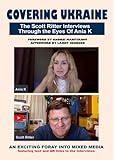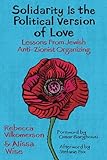Ice hockey is a game that requires exceptional skill by virtue of having to perform it on an ice surface wearing thin blades of steel. It is a challenging game where a player must elude opponents and combine with teammates to put pucks in the opposition net and keep the puck out of one’s own net. Yet hockey has an unseemly side reflected that undermines its seriousness as a respectable sport. Funnyman Rodney Dangerfield captured the absurdity of hockey in his joke, “I went to a fight the other night and a hockey game broke out.” ((Rodney Dangerfield, “They Said It,” Sports Illustrated, 4 September 1978. Edited by E.M. Swift.)) Films also poke fun at the fisticuffs in hockey, such as Slap Shot and Goon.
Many hockey insiders see fighting as integral to the National Hockey League (NHL). The president of the Calgary Flames hockey operations, Brian Burke, wrote a column for USA Today whose thesis is made clear in the title, “In support of fighting.” Burke defends his thesis not through facts or logic but through assertions and logical fallacies. He begins by setting up strawmen: that there “certain arguments that are virtually impossible to win when made against people who simply cannot or will not understand your viewpoint.” Implicit in Burke’s strawman is that he is right, and even though he is right, others will dissent.
Burke continues, “But I love this game, and I played this game professionally. I respect its fabric, its history and its unique stance on fighting. Some people just will never get any one of those three.” Implicit in this strawman is that he has an insight others cannot achieve. I never played professionally, but I played to junior B level; I also loved hockey and once considered myself deeply conversant about the game and its history (less knowledgeable on its fashion and fabrics); and I knew first hand about fighting, having on occasion been penalized for indulging. I do not, however, grant myself special status on what fighting, therefore, means to the game.
- After the strawmen, Burke sets out three premises:
(1) the incidence of fighting in hockey is diminishing, and that, says Burke, is a good thing;
(2) fighting is dangerous, but players should be allowed to assume the risks, and besides many fans like it;
(3) “Reduced to its simplest truth, fighting is one of the mechanisms that regulates the level of violence in our game. Players who break the rules are held accountable by other players. The instigator rule has reduced accountability. Eliminating fighting would render it extinct.”
Premise one is, on its face, a contradiction of Burke’s thesis.
As for premise two, why should even one player who doesn’t like fighting, be exposed to punches thrown at him. In our society, fighting (except in self-defense) is illegal. Why should hockey be held above the laws of society? Should players who want the protection of society’s laws not be accorded them? If a law is just, why should professional hockey be above reproach by the law?
Premise three is prima facie dead wrong. To adduce the falsity of what Burke asserts, one can point to minor hockey, college hockey, and international hockey where fighting is banned.
“It’s hard to quantify where our game would be without fighting,” asserts Burke. Hockey without fighting is readily quantifiable: one need only look to international hockey, particularly to the Olympics, which many, probably most, hockey enthusiasts would consider hockey at its zenith.
Burke tu quoque attempts to deflect from the dangers of fighting by pointing to other dangers such as body contact that violates the rules of hockey. There are severe penalties that are handed out for such infractions: there have already been 15 suspensions of two games or more (with loss of salary) so far into the 2013-2014 season, and repeat offenders tend to be punished more harshly. What higher deterrent, aside from an outright ban, can one impose other than suspending a player from his livelihood? Why not impose the same deterrent for fighting?
“Ninety-eight percent of NHL players voted to keep fighting in the game…” notes Burke, appealing to what Henrik Ibsen called the tyranny of the majority in An Enemy of the People.
Asserts Burke, “… our game is improved tremendously by players’ ability to police the game.” He further asserts, “And it fundamentally makes our game safer.” I have not done the study, and my search did not turn up such a study, so I will not assert, but I highly suspect that Burke is again blowing hot air from the seat of his pants.
Burke lists three levels of protection for NHL players, from least to most important: the Player Safety Department, the Officiating Department, and peer accountability. “The first line of defense against players crossing the line is players,” claims Burke.
Burke seems on shaky footing here (not good on ice). In fact, one might state that Burke is playing/managing/coaching from a different rule book than the rule book the NHL uses. When Burke was the Vancouver Canucks president and general manager, one of hockey’s most infamous incidents occurred: in March 2004, Canucks player Todd Bertuzzi attacked Colorado Avalanche player Steve Moore from behind. It was in apparent retaliation from earlier match where Moore had injured the Canucks captain Markus Naslund with a hard hit that the NHL deemed legal. Burke saw it differently, saying Moore was “a marginal player going after a superstar with a headhunting hit.” Bertuzzi crossed the line with his sucker punch to Moore resulting in three fractured neck vertebrae, facial cuts, a concussion, and lasting brain damage. Steve Moore’s career was over. Bertuzzi was suspended for the rest of the season and playoffs; he was also banned from playing the following year in Europe when the NHL season was lost to a lockout.
The Canucks had taken peer action on behalf of Naslund. What peer action was taken in defense of Moore? Moore has had to turn to the courts and be patient.
The video presents one outcome of what Burke is supporting. Is this really an image the NHL wants?










